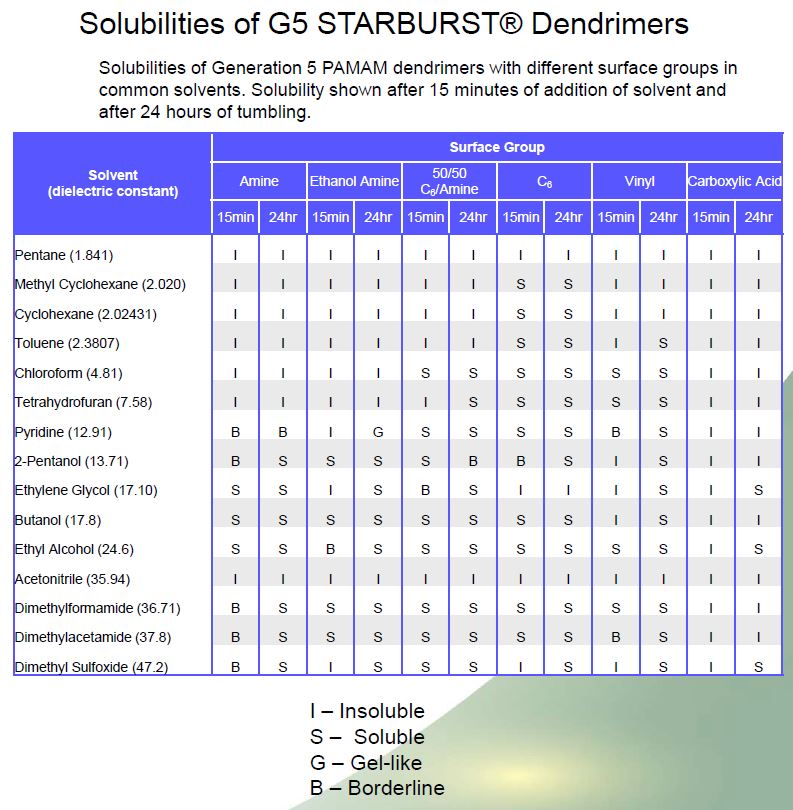|
Surface Groups & Dendritic Effects
The driving force behind the properties!
The power behind dendrimers, also known as �dendritic effects�, provides new technology for building new products. These dendritic effects arise from the nanosize, shape, and chemistry contained within these precise nanostructures.
Dendritic effects are discovered by comparing different sizes (aka �generations�) and surface chemistries. It is difficult to find another nanometer sized particle that gives such precise control over functionality, size, shape, and performance to uncover these dendritic effects.
The surface groups dictate the solubility and compatibility with solvents and other molecules. Most of the surface groups provide excellent water solubility except for the "hexylamide" surface groups. Aqueous solutions of 30 to 50 wt% PAMAM dendrimer can be made which is practically unheard of for linear polymers. The viscosity of these highly concentrated dendrimers solutions is still close to that of water. Amazing!
As with all nanosized objects, dendrimers have an incredibly high surface area to volume ratio which is referred to as �nanoscale effects�. In addition, the typical dendrimer nanosizes (1 to 10 nm) are in the same dimensions as proteins, antibodies, and enzymes which can
lead to interest interactions with these biomolecules.
Together, nanoscale and dendritic effects create new phenomena such as:
� low viscosity
� polyvalency
� high solubility
� nanocontainers
� and many more
-------------------------------------------------------------------------------------------------------------
Solubility of the Various Surface Groups:

|